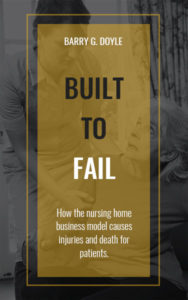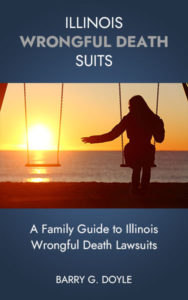The Illinois Department of Health has cited and fined Nature Trail Health & Rehab when staff failed to properly implement fall prevention interventions for a high-risk resident with dementia, resulting in two falls within six days of admission that caused a hip fracture requiring surgery, after which the resident never returned to the facility and died while in hospice care.
The resident in question was admitted to the facility with several serious health conditions, including unspecified dementia, weakness, and atrial fibrillation. With moderately impaired cognition, he was immediately identified as a “high fall risk.” The facility developed a care plan with interventions including bed and chair alarms from admission day, and later added precautions such as “assist to toilet prior to laying down” and “mat at bedside when in bed” after his first fall.
Despite these documented precautions, the resident experienced two falls within just six days of being admitted to the facility. The first fall occurred while he was eating dinner in his room. A Certified Nursing Assistant reported hearing “a loud noise and ran to his room and found him on the floor.” The resident’s roommate stated he witnessed the resident hit his head when he fell. The CNA observed that “there was no fall mat observed in the room and the resident did not have an alarm sounding,” even though bed and chair alarms had been ordered for him.
Following this first fall, the resident was sent to the emergency room for evaluation, particularly because he was on blood thinners, which increased his risk of internal bleeding from any trauma. The root cause of the fall was identified as the resident attempting “to stand up out of bed unassisted and fell, hitting his head.”
Just two days later, the resident experienced a second fall. A nursing note documented that he “slid out of his bed onto his bedroom floor” at 6:30 in the morning. Initially, the resident didn’t report any pain after this fall and was moved to his wheelchair with the assistance of two staff members. However, by 11:00 AM, he began “complaining of pain to left hip.” Later that same day, he also reported shoulder pain. The facility physician ordered X-rays of both areas.
The X-ray results, received in the early morning hours of the following day, revealed a left intertrochanteric fracture—a serious break near the top of the femur (thigh bone). The resident was transferred to the hospital, where a CT scan ruled out head and spine injuries, but an orthopedic surgeon confirmed the hip fracture and recommended surgical repair. A “Brief Operative Note” documents that the resident underwent an “Open Reduction Internal Fixation of the left hip” (surgical procedure to repair the broken bone using metal hardware).
Tragically, the facility administrator later stated that after the second fall and subsequent hospitalization, the resident “never returned to the facility as planned due to going on hospice and expiring at the hospital.” This suggests the resident’s condition deteriorated significantly after the hip fracture, ultimately leading to his death.
When investigators interviewed the resident’s roommate, who was alert and oriented, he stated “the alarm did not sound for either of the falls.” He remembered seeing the resident getting up and being “all wobbly” but was unable to help because he himself couldn’t walk.
The Director of Nursing explained that Certified Nursing Assistants are supposed to “check placement and function at the start of each shift of resident’s bed/chair alarms.” She stated she was “unsure why the alarm did not sound after each of the falls” and confirmed the alarm “should have been placed both in the chair and in the bed.” Multiple CNAs confirmed they were responsible for checking “placement and function every shift for alarms.”
The circumstances of both falls suggest serious lapses in the implementation of the resident’s care plan. Despite being identified as a high fall risk with orders for alarms, the alarms either weren’t properly installed or weren’t functioning during critical moments. The resident was able to attempt transfers independently despite his cognitive impairment and physical weakness, without the alarm system alerting staff in time to intervene.
These failures ultimately contributed to life-changing injuries for the resident, who sustained a serious hip fracture requiring surgery, and never returned to the facility before his death.
One of our core beliefs is that nursing homes are built to fail due to the business model they follow and that unnecessary accidental injuries and wrongful deaths of nursing home residents are the inevitable result. Our experienced Chicago nursing home lawyers are ready to help you understand what happened, why, and what your rights are. Contact us to get the help you need.


